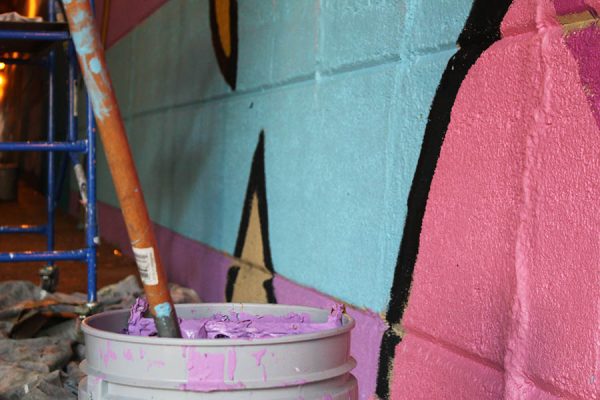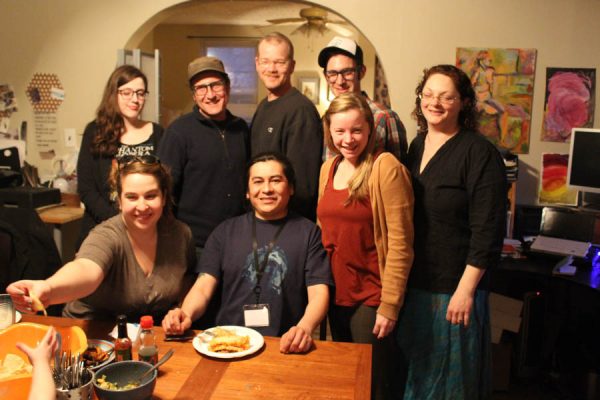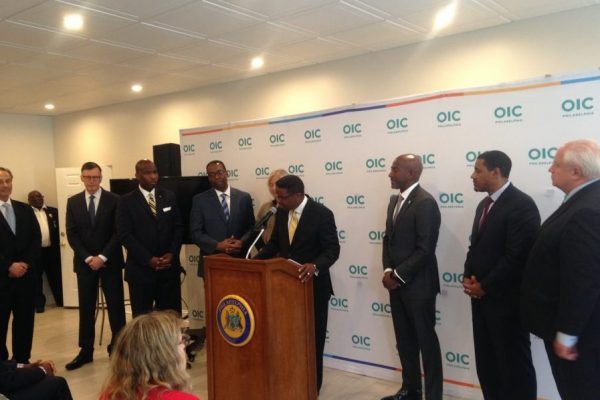For Safer Riverwards Communities, Install More Bike Lanes
Earlier this summer, several Fishtown residents, including LeeAnne Mullins, decided they were fed up with the situation on York Street—cars barely slowing down at stop signs, driving two-abreast and a general lack of visibility for pedestrians stepping into the crosswalk.
She took her complaints to the local Facebook group, “Safer Streets for Fishtown,” where she was advised to contact the New Kensington Community Development Corporation, who helped her get in touch with Councilman Mark Squilla.
“There were two terrible sections [of York Street],” Mullins said. “One was the traffic light pattern at the intersection of Frankford Avenue, Trenton Avenue and York Street … The other was around the east end of York, close to Aramingo, where cars traveling west on York often blaze through the stop sign on Almond.”
It was a mess and the Councilman knew it. He, his staff, Mullins and members of local civic association leadership exchanged several emails and were able to speak over the phone before setting up a larger meeting on August 4. While there, the Streets Dept. Safety Engineer presented road plans for additional street striping, bike lanes, new angle parking and stop-bars. The Streets Dept. also put in a work order for new timing for the six-point intersection at Frankford. It would remake York Street and residents were psyched.
“For me personally, it is great. It connects the sharrows on Tulip and Cedar almost all the way to the bike lanes on Aramingo, which is how I travel from lower Fishtown and Center City to my house,” Jenn Bazydlo, who was involved at the August 4 meeting, told me for a post on the Bicycle Coalition’s blog in August. “On a bigger level, it was exciting that people acknowledged bike lanes as an effective traffic calming tool.”
In the coming years, Philadelphia will likely see more bike lanes installed on our streets and bicycling will, as it has for decades, increasingly be seen as a viable mode of primary transportation. Naysayers may say nay, but this is a good thing for our neighborhoods.
Bicycling as a tool for safer streets
Bazydlo is a cyclist. Mullins is not. Both wanted bike lanes.
“It’s important for the community to support all transportation methods being utilized in their neighborhoods whether they participate in that mode of transport or not,” Mullins said. “We have a lot of cyclists in the Riverwards who have a right to feel safe on the street. Cyclists are now able to enjoy the wider berth provided by the bike lanes that neatly connect York Street to Aramingo and beyond.”
It’s common knowledge that when bike lanes are installed on a given street, bicycle usage goes up. This is most likely because cyclists perceive a road with a lane to be safer than one without. The better the infrastructure, the more likely someone is to use the street for cycling.
“I feel that having dedicated bike lanes prevents accidents because we’re not competing with drivers for the same space,” said Wilfredo Rivera, of East Kensington. “Having bike lanes, bikers can ride at their own pace and not feel pressured by drivers.”
Research done by Public Health consultant Peter Lyndon Jacobson shows that in places where bicycle use doubled the crash risk for each individual cyclist dove by a third. An additional study by the Alliance for Biking and Walking found that where bicycling and walking facilities exist, they’re not only likely to be used, but
drivers are more likely to operate carefully and safely around walkers and bikers when they’re used to seeing people walking and biking.
When bike lanes become a topic of conversation in cities it inevitably turns into an us vs. them debate. This is counterproductive. Cars and bikes more often complement one another. When more people use street-visible alternatives to motor vehicles, like bicycles, drivers are forced to adapt and inevitably slow down.
This means safer streets and fewer crashes. But, when crashes do occur, a slower motor vehicle speed means the cyclist or pedestrian on the receiving end is less likely to die. The easier it is to avoid stop signs, the easier it is to pick up speed on a well-used street like York.
A well-referenced study by the UK Department of Transportation found that the probability of getting killed by a motor vehicle traveling 20 miles per hour is 1 percent. The probability of a car at 60 miles per hour is 98 percent. For cars going 40 miles per hour (which is relatively easy on many streets in Philadelphia), the probability of pedestrian death in a crash is 30 percent.
More to Come
What’s unique about the situation on York Street is that it was completed so quickly. By the end of August—as scheduled—the lanes were on York, the 8 foot-by-5.9 foot STOP legends were at the crosswalks and the lights were timed. It was paid for with Automatic Red Light Enforcement money. So, those of you who made the right on red at York and Aramingo and then got a $50 ticket in the mail: Thanks.
If you look at the recently-adopted Riverwards 2035 Draft Plan, the city plans to rehab even more streets in the coming years. Kensington Avenue, Frankford Avenue, Aramingo Avenue, Lehigh Avenue, Allegheny Avenue and Castor Avenue, as well as several others are all listed as high-priority streets for safety improvements.
One of those improvements is a complete remaking of Lehigh Avenue. This not only includes the partial deconstruction of the viaduct bridge separation, but a bollard-protected bike lane along the street. Similar studies which led to the proposed Lehigh and current York Street changes are being conducted on other streets in the Riverwards, including Frankford Avenue, to see what can be done to make those streets safer.
As an added push for safer streets, City Council will consider a $5 vehicle registration fee this fall. The fee would raise $3.5 million annually to go back into street maintenance.
Before It’s Too Late
Philadelphia’s Indego bike share system has been a huge success since its April inception. And come next year, there is a guaranteed expansion coming to the system. The expansion had been planned from the get-go, but a recent $1.5 million grant from the William Penn Foundation has made it inevitable.
Given the amount of commuters in the Riverwards (about 2 percent of us use a bicycle as our primary mode of transportation, though that number is exponentially higher in neighborhoods like Fishtown and Northern Liberties), the city will likely be looking at spots in our neighborhoods north of Girard for additional stations and usage.
Generally, the people using the bike share are not avid cyclists, yet. It’s important the city creates safer streets for these new bicyclists in the area around where they plan on installing the new stations.
Pushback? Nope.
According to those who worked on the York Street project, there have been few, if any, complaints. One look at York Street at any time of day will show you that cars are no longer riding two or three abreast in a street meant for one motor vehicle lane.
“We have not gotten any complaints, except that it’s sharpened people’s awareness of the dangers along Frankford Avenue,” said Jamie Ware, of Fishtown Neighbors Association, “which we understand is currently undergoing a traffic study.”






